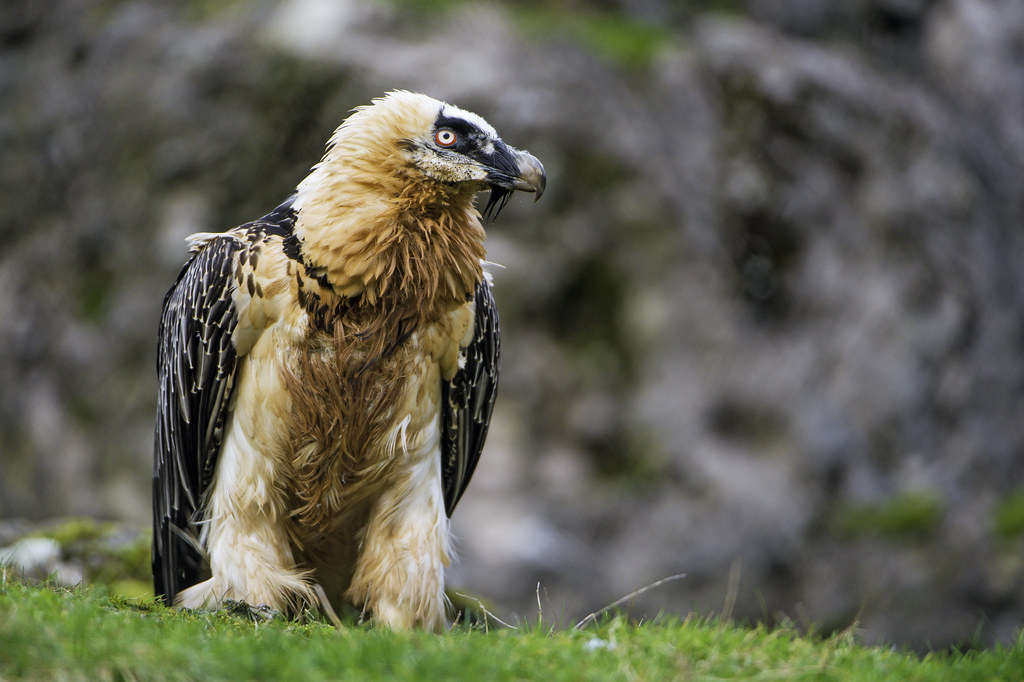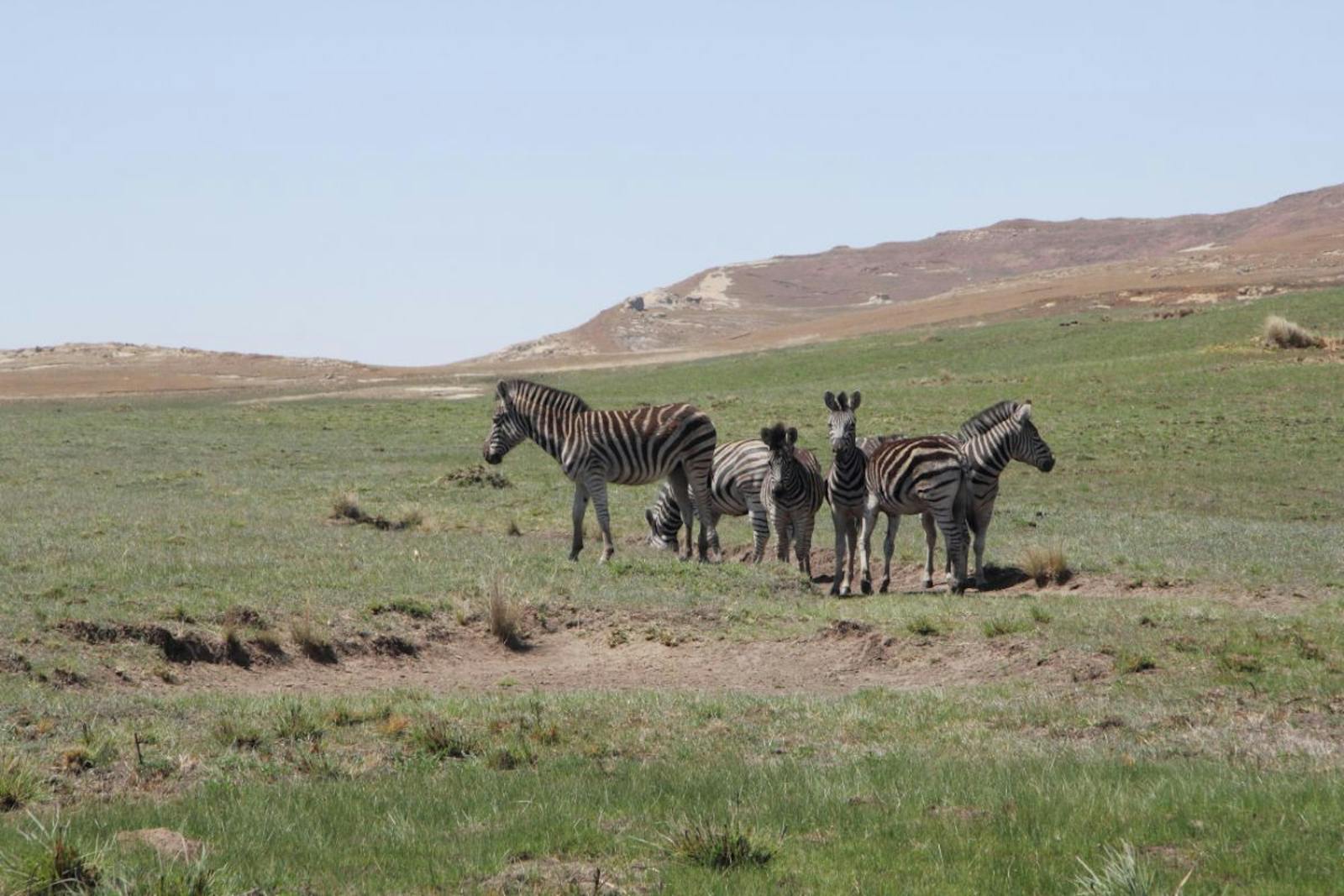Drakensberg Grasslands
The ecoregion’s land area is provided in units of 1,000 hectares. The protection goal is the Global Safety Net (GSN1) area for the given ecoregion. The protection level indicates the percentage of the GSN goal that is currently protected on a scale of 0-10.
Bioregion: Southeast African Subtropical Grasslands (AT8)
Realm: Afrotropics
Ecoregion Size (1000 ha):
11,516
Ecoregion ID:
41
Conservation Target:
10%
Protection Level:
4
States: South Africa, Lesotho
The Drakensberg Grasslands ecoregion is the last stronghold of the bearded vulture or lammergeier in southern Africa. These majestic birds of prey nest in potholes on large cliffs usually at elevations higher than 1,850 m. Over the past few decades, there has been a decline in the population’s distribution, density, and territorial occupancy. A possible explanation for their low population numbers is due to unintentional poisoning from when they eat wildlife carcasses, for example lions, that were poisoned by humans as retaliation for livestock depredation.
The ecoregion is found in southeastern South Africa, primarily within the Kwazulu-Natal province. The elevational range of this ecoregion is between 150 m and 3,482 m, which is the highest point in South Africa. The Drakensberg is an important water catchment area, and the source of both the Tugela and Senqu (Orange) Rivers. Rainfall ranges from 450 mm per year in the southwest to over 1,100 mm in the northeast, with the highest altitudes receiving 1,900 mm annually. Because of the high precipitation, soils (mostly lithosols) are typically leached, and are rocky and shallow in most places.

The flagship species of the Drakensberg Grasslands ecoregion is the bearded vulture. Image credit: Courtesy of Tambako, Flickr
Cold and wet conditions pervade most of the area, excluding the Lesotho Plateau, where drought can occur in the rain shadow. Temperatures vary between 40º and -13ºC, averaging 15ºC, with temperatures dropping below -20ºC on the summit plateau. The large climatic variation results in a diverse vegetative community, with montane grassland prevalent on the wet exposed slopes, and forest patches lining the valleys. The basalt rocks form plateaus and steep slopes that support a treeless alpine vegetation consisting mostly of tussock grasses, creeping or mat-forming plants, and ericoid dwarf shrubs.
In the forest habitat, Podocarpus is the most common tree genus, and Widdringtonia is also present. Dominant canopy trees include Maytenus peduncularis, Podocarpus latifolius, Pterocelastrus rostratus, Olinia emarginata, and Scolopia mundii. In the grasslands, common grass species include Monocymbium ceresiiforme, Diheteropogon filifolius, Sporobolus centrifugus, Harpochloa falx, Cymbopogon dieterlenii, and Eulalia villosa. Grasses on the lower slopes of the Drakensberg include Poa annua, Hyparrhenia hirta, Aristida diffusa, and Trachypogon spicatus.
The Drakensberg forms the southernmost extent of the Afromontane regional center of endemism. Unlike tropical African mountains, where Afromontane communities are found only above 2,000 m, here latitude compensates for altitude, allowing Afromontane communities to occur around sea level. An estimated 30 percent of plant species are endemic to this ecoregion. The spiral aloe, a spectacular endemic plant of Lesotho, is found only above 2,000 m.
Animal endemism is not high in most groups, but is pronounced among reptiles and Lycaenid butterflies. Strictly endemic reptiles include the Drakensberg dwarf chameleon, woodbush legless skink, Transvaal flat lizard, and prickly girdled lizard. The ecoregion also supports important populations of a threatened lizard, Breyer’s whip lizard, as well as the five-toed whip lizard, Drakensberg crag lizard, and near-endemic Drakensberg rock gecko. Bird species richness is fairly high. Near-endemics include the bush blackcap, Drakensberg siskin, mountain pipit, forest canary, yellow-breasted pipit, orange-breasted rockjumper, buff-streaked chat, Rudd’s lark, and Botha’s lark.
The grassland biome is one of southern Africa’s most endangered habitats, primarily as a result of extensive fragmentation due to agriculture and afforestation with Eucalyptus and Pinus species. The second largest park is uKhahlamba-Drakensberg Park Ramsar site. Other protected areas include Itala, Ncandu, Ntsikeni, Lammergeier Highlands, and Malekgalonyan Nature Reserves, as well as Lesotho, Natal Drakensberg, and Natal National Parks.
Much of the ecoregion has been transformed to agriculture and forestry plantations. In areas that have been heavily grazed, the native grassland has been invaded by dense and less palatable grass species; for example where Themeda triandra has been replaced by Aristida junciformis. In addition, fires (both natural due to lightning strikes and controlled burns for tick removal) and heavy grazing by domestic animals has extensively altered the habitat. These changes have contributed to the loss of indigenous plant species over large areas.
Remaining grassland areas are a focus for the commercial collection of medicinal plants, including the destructive harvest of bulbs, tubers, aromatic stems, and rhizomes (e.g. Gunnera perpensa, Dianthus spp., Gladiolus spp., and Scilla natalensis). Over-utilization also threatens the pepperbark tree; the largest remaining population in South Africa is in the Blouberg Mountains. Other concerns include the expansion of invasive plants like Chrysocoma ciliata and Helichrysum trilineatum, soil erosion, and clearance for cultivation.
The priority conservation actions for the next decade will be to: 1) strengthen regulations on harvesting, transporting, and exporting herbal medicines to prevent the extinction of medicinal plants; 2) promote sustainable agricultural practices to prevent degradation by overgrazing; and 3) encourage protected areas to implement development initiatives to improve livelihood opportunities.
Citations
1. Burgess, N., Hales, J.A., Underwood, E., Dinerstein, E., Olson, D., Itoua, I., Schipper, J., Ricketts, T. and Newman, K. 2004. Terrestrial ecoregions of Africa and Madagascar: a conservation assessment. Island Press.
2. Krüger, S.C. and Amar, A. 2017. Productivity of the declining Bearded Vulture Gypaetus barbatus population in southern Africa. Ostrich. 88(2), pp.139-145.
3. Mugomeri, E., Chatanga, P., Raditladi, T., Makara, M. and Tarirai, C. 2016. Ethnobotanical study and conservation status of local medicinal plants: towards a repository and monograph of herbal medicines in Lesotho. African Journal of Traditional, Complementary and Alternative Medicines. 13(1), pp.143-156.
4. Roga, N.B., Ferguson, W. and Bagoora, F. 2017. Transboundary Conservation Areas in African Mountains: Opportunities and Challenges for Addressing Global Change. Earth Sciences. 6(6), p.117.




